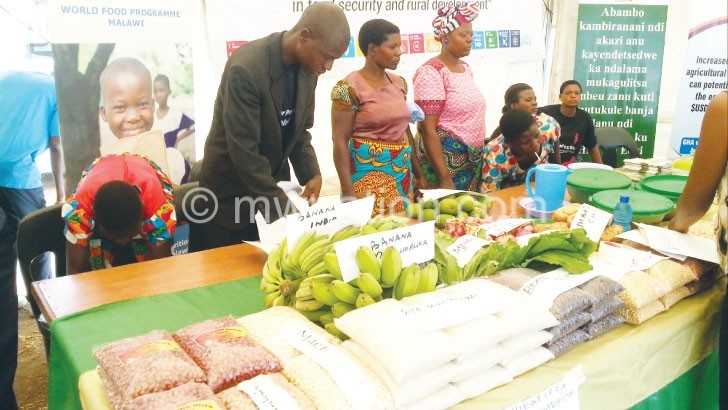Towards commercial agriculture
John Mikiasi of Simphasi in Mchinji District aspires to engage in largescale commercial farming. He has 10 hectares of land but using rudimentary equipment such as hoes is practically impossible.
He only cultivates less than three hectares of the land. This is common in Malawi where large pieces of land are idle or leased out to other subsistent small scale farmers.
Use of simple implements such as hoes, dependence on rains, limited land size and low inputs and technology absorption characterise the country’s agriculture systems. Not surprisingly though, every year, the country achieves reduced yields, low value addition and profitability.
With the status quo, the narrative of Malawi becoming a predominantly producing and exporting country remains a far-fetched dream if agro- industrialisation and value chain addition are not enhanced through the entire production chain.

President Peter Mutharika, speaking during the opening of the 15th National Agriculture Fair in Blantyre recently, retaliated government’s commitment in modernising the agriculture sector with farmers moving away from using hand drudgery implements such as hoes for mechanised implements such as tractors and irrigation pumps.
“Time has come to move Malawi from subsistence to commercial farming,” he said. “We are implementing the agriculture commercialisation project with focus on value chain development of selected crops, fisheries and livestocks.”
Agriculture contributes about 39 percent of the country’s gross domestic product (GDP) and an estimated 4.7 million hectares of arable land is cultivated under rain-fed and irrigated systems.
The Malabo Montpellier Panel recommends a substantially increased policy attention and investment in advancing mechanisation of agricultural value chains to deliver on the targets set out by the African Union’s Agenda 2063 and the Malabo Declaration.
In a demonstrated commitment to the call, Malawi formulated the National Agriculture Policy to provide an enabling framework for agriculture to effectively contribute to national development. The National Agriculture Investment Plan (Naip) clearly spells out an investment strategy towards mechanisation of the agriculture value chains through increased number of hectares under tractor-hire schemes, oxenisation, increase distribution of hand planks, motorisation of irrigation systems and use of machines.
A conference of agriculture experts and stakeholders happening on the sidelines of the 15th National Agriculture Fair in Blantyre, expressed concern at the stagnation of agro-industrialisation in Malawi.
Ministry of Trade, Industry and Tourism deputy director of trade Clement Phangaphanga highlighted the existing disconnect between growth of the agriculture sector in Malawi and agro-industrialisation which had been given less attention.
He said if fully industrialised, the country’s agriculture sector has the potential of producing enough high quality products for both domestic and foreign markets; thus operationalising the National Export Strategy and diversifying away from tobacco.
A Malabo Montpellier Panel Report of 2018 titled, Mechanised Transforming Africa’s Agriculture Value Chains states that Africa is the region with the least mechanised agricultural system in the world. African farmers have 10 times fewer mechanised tools per farm than their counterparts in developing regions.
In order to increase commercialisation of the agriculture value chain products, a Malawi Agriculture Commercialisation Project (Agcom) project is jointly being implemented by the Ministry of Agriculture, Irrigation and Water Development and Ministry of Trade, Industry and Tourism.
Agcom’s national coordinator Ted Nankhumwa said the project will encourage and support small-scale and emerging farmers and corporatives producing on more than eight hectares of land with the capacity to produce more than subsistence.
“There will be opportunities for loans and matching grants for procurement of farming and processing equipment,” he said. “With high and quality levels of products, structured markets would be identified internationally and domestic warehouse receipting encouraged.”
Lilongwe University of Agriculture and Natural Resources (Luanar) associate professor in the Department of Food Sciences, Kingsley Masamba, observes that Malawi’s agro-industrialisation for value addition is being challenged by low quality of products that cannot favourably compete with those from other countries.
He warns: “ Consumers will not buy a Malawian product out of sympathy, but must first be convinced of quality and its value for money. n





